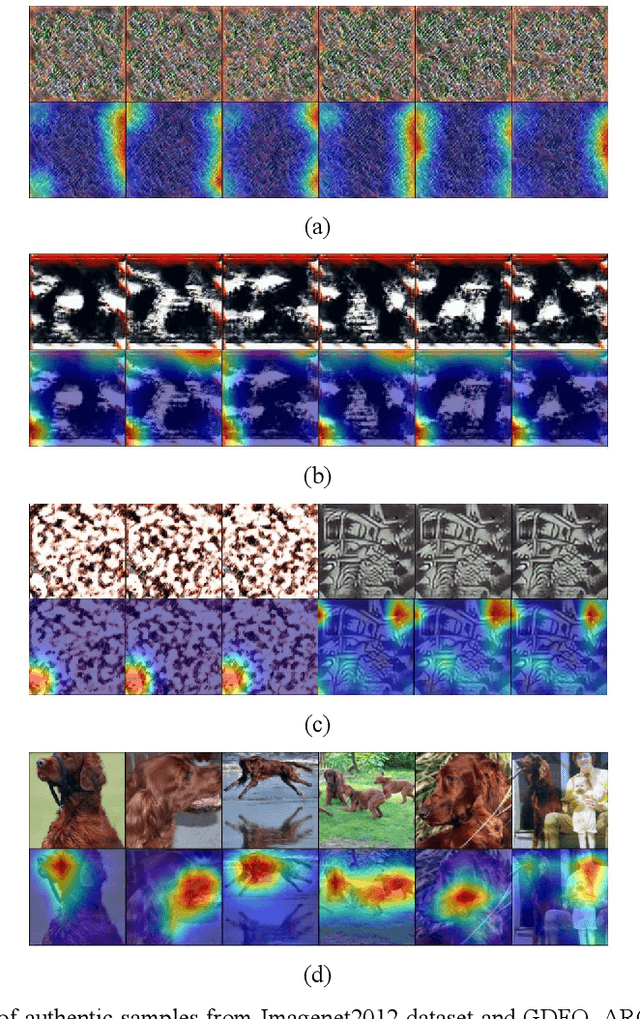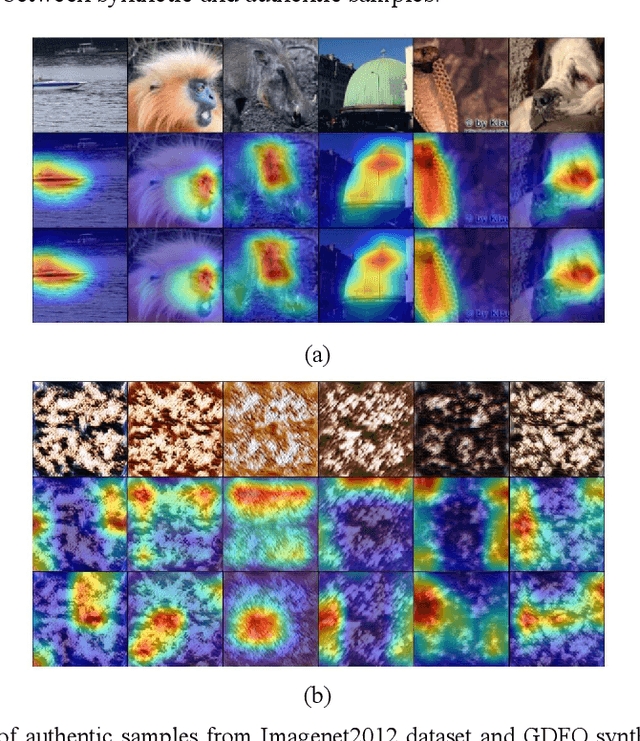Huaxiang Lu
ACQ: Improving Generative Data-free Quantization Via Attention Correction
Jan 18, 2023



Abstract:Data-free quantization aims to achieve model quantization without accessing any authentic sample. It is significant in an application-oriented context involving data privacy. Converting noise vectors into synthetic samples through a generator is a popular data-free quantization method, which is called generative data-free quantization. However, there is a difference in attention between synthetic samples and authentic samples. This is always ignored and restricts the quantization performance. First, since synthetic samples of the same class are prone to have homogenous attention, the quantized network can only learn limited modes of attention. Second, synthetic samples in eval mode and training mode exhibit different attention. Hence, the batch-normalization statistics matching tends to be inaccurate. ACQ is proposed in this paper to fix the attention of synthetic samples. An attention center position-condition generator is established regarding the homogenization of intra-class attention. Restricted by the attention center matching loss, the attention center position is treated as the generator's condition input to guide synthetic samples in obtaining diverse attention. Moreover, we design adversarial loss of paired synthetic samples under the same condition to prevent the generator from paying overmuch attention to the condition, which may result in mode collapse. To improve the attention similarity of synthetic samples in different network modes, we introduce a consistency penalty to guarantee accurate BN statistics matching. The experimental results demonstrate that ACQ effectively improves the attention problems of synthetic samples. Under various training settings, ACQ achieves the best quantization performance. For the 4-bit quantization of Resnet18 and Resnet50, ACQ reaches 67.55% and 72.23% accuracy, respectively.
Deep Template Matching for Offline Handwritten Chinese Character Recognition
Nov 15, 2018



Abstract:Just like its remarkable achievements in many computer vision tasks, the convolutional neural networks (CNN) provide an end-to-end solution in handwritten Chinese character recognition (HCCR) with great success. However, the process of learning discriminative features for image recognition is difficult in cases where little data is available. In this paper, we propose a novel method for learning siamese neural network which employ a special structure to predict the similarity between handwritten Chinese characters and template images. The optimization of siamese neural network can be treated as a simple binary classification problem. When the training process has been finished, the powerful discriminative features help us to generalize the predictive power not just to new data, but to entirely new classes that never appear in the training set. Experiments performed on the ICDAR-2013 offline HCCR datasets have shown that the proposed method has a very promising generalization ability to the new classes that never appear in the training set.
Building Efficient CNN Architecture for Offline Handwritten Chinese Character Recognition
Apr 08, 2018



Abstract:Deep convolutional networks based methods have brought great breakthrough in images classification, which provides an end-to-end solution for handwritten Chinese character recognition(HCCR) problem through learning discriminative features automatically. Nevertheless, state-of-the-art CNNs appear to incur huge computation cost, and require the storage of a large number of parameters especially in fully connected layers, which is difficult to deploy such networks into alternative hardware device with the limit of computation amount. To solve the storage problem, we propose a novel technique called Global Weighted Arverage Pooling for reducing the parameters in fully connected layer without loss in accuracy. Besides, we implement a cascaded model in single CNN by adding mid output layer to complete recognition as early as possible, which reduces average inference time significantly. Experiments were performed on the ICDAR-2013 offline HCCR dataset, and it is found that the proposed approach only needs 6.9ms for classfying a chracter image on average, and achieves the state-of-the-art accuracy of 97.1% while requiring only 3.3MB for storage.
 Add to Chrome
Add to Chrome Add to Firefox
Add to Firefox Add to Edge
Add to Edge